Marktstudio, directed by Enrico Camprini and Chiara Spaggiari, with the collaboration of Angelica Bertoli and Alessia Sebastiani, is one of the most interesting realities on the contemporary art scene in Bologna. “Container of artistic projects, but also artistic project itself” – as it is written in the statement on the website – the independent space born from an idea of the artist Giuseppe De Mattia in February 2020. It is based on the investigation of the short circuit that feeds any exhibition process: the one capable of transforming the work of art into any consumer product – not surprisingly, Marktstudio has developed, in this regard, the format called MERCE (merchandise in Italian). It is a matter that for decades has divided artists, curators, critics, gallery owners and art historians and it underlies a further implication, certainly more intriguing and insidious, represented by the fact that every common object could potentially turn into a work of art – a process mirroring the opposite of the first, of which the great Marcel Duchamp was the undisputed creator. To learn more about the reality located in the so-called Manifattura delle Arti area, inside the unique location of a frame workshop / shop, we interviewed its artistic directors.
Antongiulio Vergine: Marktstudio was born at the beginning of 2020, shortly before the spread of the pandemic – after the Luca Coclite exhibition, Supertrama, a year later, followed by the one of Fabio Giorgi Alberti, Senza Meno Due, and that of Bekhbaatar Enkhtur, entitled Tsam. Can you tell us more about its genesis and the reason to choosing to place yourself in a frame workshop and shop?
Enrico Camprini and Chiara Spaggiari: Marktstudio was born thanks to an idea by Giuseppe De Mattia, with whom a dialogue was established, which gave rise to this curatorial but also artistic project. A dialogue was established with Giuseppe, which gave rise to this curatorial but also artistic project; a project that closely touches his research, which in recent years has often followed a line of ironical criticism on the artistic object and its salability. Marktstudio extends this critique on a curatorial level, investigating the possibilities of the interaction between artistic works, inherent to the most recent and emerging research, in unconventional sales and production spaces. Hence, the choice to start in a laboratory and shop of frames appears clear and, moreover, as from the first intentions of the project, it suggests some embryonic exhibition experiences from the history of contemporary art, which took place precisely in artists’ workshops and studios.
Speaking of the short circuit to which the MERCE format alludes, what is your opinion regarding the commodification of art and the consequent creation of the figure of “artistar”? Is all that glitters really gold or are we faced with excessive (and momentary) exaltation?
[We didn’t want to spoil anything in this regard, but the next show will be about Jeff Koons (LAUGH)]. MERCE was actually born as a makeshift expedient, which nevertheless turns out to be a clear manifesto for our research. In this way we were able to work on the idea of an exhibition and installation display that would highlight the works as objects and the work of individual artists. In this way, critical research can be deepened in order to leave the right space for an interpretative analysis of the works in a non-canonical exhibition context. It’s clear that MERCE is not just a tautology of our exhibition display but, inevitably, a telegraphic reflection on what a work of art is. It’s also clear that not all that glitters is gold, the world of art rests on speculative dynamics that sometimes generate bubbles, which maybe sooner or later burst.
Going deeper into your experience, what is your way of operating? How does the selection of artists and the organization of exhibitions take place?
The first exhibitions were born from a reflection and shared decisions between Enrico and Giuseppe, Carlo Favero, Federica Fiumelli and Eleonora Ondolati, first members of the project. From the Autumn of 2021 Giuseppe, while remaining “the spiritual father” and the closest friend, left the artistic direction to Enrico, who subsequently involved me (Chiara Spaggiari). To conclude the Marktstudio team, Angelica Bertoli, an art historian, and Alessia Sebastiani, social media manager, joined the project. Markstudio is not an exhibition space, or a project space conventionally understood, but a curatorship project – if we can call it that – which has taken on an itinerant nature, starting from 2021. Obviously the space in which the artist will intervene makes all the difference and has priority. In this sense it is necessary to find the right compromises between the work and the research of the artists and the unconventional exhibition spaces. It is always a game of intersections and dialogue between the pre-eminence of spaces and the readability of the individual works, which must never be compromised and, indeed, when possible amplified by virtue of the chosen space. On the other hand, this is the goal of our work.
After the first three exhibitions above mentioned, Maisia by Grazia Amelia Bellitta has just ended. Would you like to briefly tell us more about these four projects?
Due to Covid, in two years we have managed to propose only four projects to which we are closely linked, although for different reasons. What unites them, beyond the curatorial imprint of Marktstudio, is the need to reflect on works of a purely object nature. In this regard, the last exhibition by Grazia Amelia Bellitta is paradigmatic. Grazia was Marktstudio’s first foray outside the walls of the Perimeter of Art. In fact, she intervened inside the spaces of the F.lli Cacciari modern antiques shop, located in via Santo Stefano in Bologna. It is a space as suggestive as it is complex, characterized by twentieth-century graphic and design works. Grazia was able to extraordinarily work in this context, proposing three works related to her research, which she re-semantizes and re-elaborates traditional superstitious practices of southern Italy in a contemporary key. Three different objects interacted by contrasting juxtapositions within the space: a small knife stuck in the window titled I give you my heart; Sciò, a leather jacket with a post-punk aesthetic patches produced by the artist are sewn; a pair of terracotta horns, entitled Stellosa.
Going back to the period of the pandemic, what has changed – if anything has changed – in the art world compared to before? In your case, was it an event that brought new ideas and reflections?
Returning to the question above, we defined MERCE as a makeshift device, as it was born precisely in the context of the pandemic, so as to allow us to work on the installation of art works that were mainly visible from outside the shop, through the window. As we have already explained it was a change of a practical nature, but which allowed the research of Marktstudio to be more coherent. We have therefore removed the term “exhibition” from our vocabulary, privileging that of “intervention”, limiting the exhibited pieces to a minimum number, favoring a closer look at the individual work and always guaranteeing the presence of a written critical reflection that accompanies the exhibition intervention.
On the occasion of ART CITY Bologna 2022, you will host a solo show of Letizia Calori. Can you tell us something about it?
For ART CITY we will return to the spaces of Perimetro dell’Arte. The title of Letizia Calori’s intervention will be Hard Work and, never as in this case in the short history of Marktstudio, the processuality of artistic work will be thematized, albeit in a non didactic way, through two series of sculptural works. We are waiting for you starting from 12 May.
It is too early to say – especially with the long break that forced you to interrupt the activities for the reasons we already know – but what is the balance of these first two years of Marktstudio?
The balance, net of all the ups and downs is certainly positive. Having had an interval of almost a year between the last interventions presented, we can still be satisfied, the response was good. It remains our interest to organize these interventions in a cadenced way, not particularly assiduously, both for obvious reasons related to the spaces in which we intervene, and because we believe that to work fruitfully on the artistic scene that we want to deepen, it is counterproductive to have too tight schedules. Halfway between random events and crowded appointments, we hope to be able to propose interventions in a calibrated way and, who knows, with unexpected implications.
Antongiulio Vergine
Info:
Markstudio, via Don Minzoni 7/A, Bologna
https://marktstudio.art/
marktstudiobo@gmail.com
@markt_studio
 Grazia Amelia Bellitta, Maisia, installation view, ph. Carlo Favero, courtesy Marktstudio, Bologna
Grazia Amelia Bellitta, Maisia, installation view, ph. Carlo Favero, courtesy Marktstudio, Bologna
 Grazia Amelia Bellitta, Maisia, installation view, ph. Carlo Favero, courtesy Marktstudio, Bologna
Grazia Amelia Bellitta, Maisia, installation view, ph. Carlo Favero, courtesy Marktstudio, Bologna
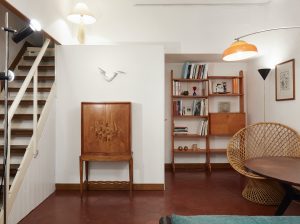 Grazia Amelia Bellitta, Maisia, installation view, ph. Carlo Favero, courtesy Marktstudio, Bologna
Grazia Amelia Bellitta, Maisia, installation view, ph. Carlo Favero, courtesy Marktstudio, Bologna
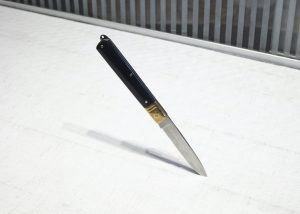 Grazia Amelia Bellitta, Ricordo d’amore. Ti dono il cuore mio, 2021, ph. Carlo Favero, courtesy Marktstudio, Bologna
Grazia Amelia Bellitta, Ricordo d’amore. Ti dono il cuore mio, 2021, ph. Carlo Favero, courtesy Marktstudio, Bologna
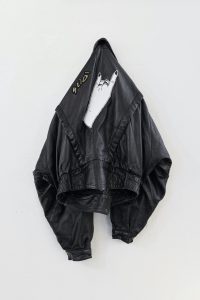 Grazia Amelia Bellitta, Sciò, 2022, ph. Carlo Favero, courtesy Marktstudio, Bologna
Grazia Amelia Bellitta, Sciò, 2022, ph. Carlo Favero, courtesy Marktstudio, Bologna
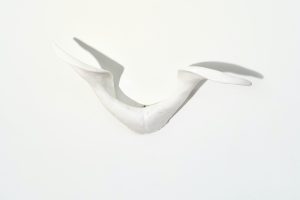 Grazia Amelia Bellitta, Stellosa, 2022, ph. Carlo Favero, courtesy Marktstudio, Bologna
Grazia Amelia Bellitta, Stellosa, 2022, ph. Carlo Favero, courtesy Marktstudio, Bologna
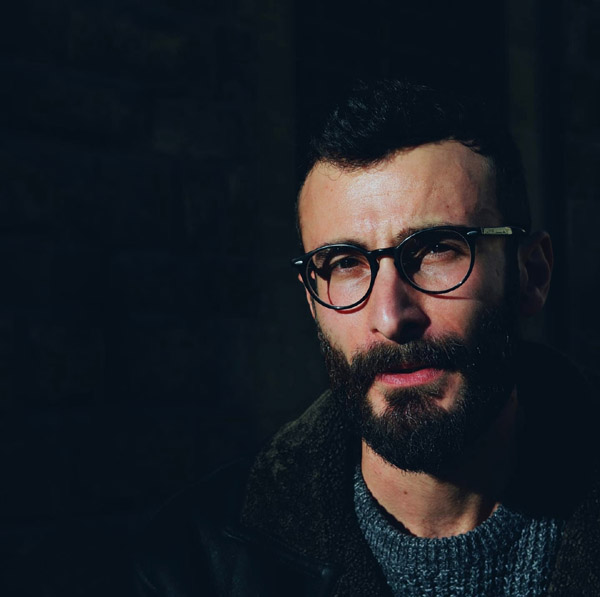
Born in Campi Salentina (LE). After the three-year degree in Technologies for the Conservation and Restoration of Cultural Heritage at the University of Salento, I attend the Master of Science in Visual Arts at the University of Bologna. I collaborated with Galleria d’Arte Maggiore g.a.m. (Bologna) and with MUMA – Museum of the Ancient Sea in Nardò (LE). I am interested in events concerning contemporary art, in particular those related to video-photographic and performative practices. I write for ATPdiary and Juliet Art Magazine.






NO COMMENT